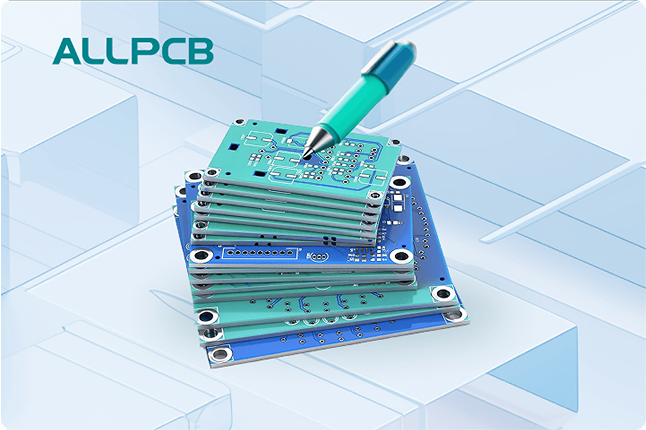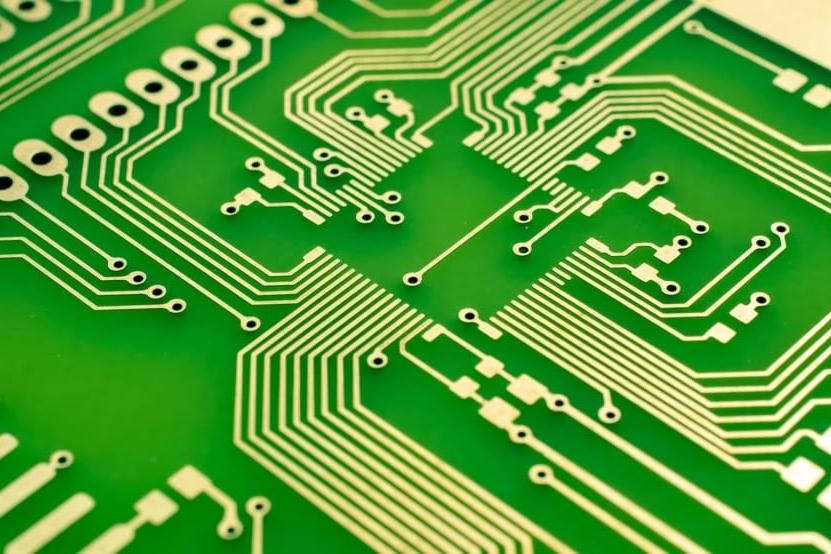In today’s fast-paced world, elevators are more than just a convenience—they’re a necessity in high-rise buildings, commercial spaces, and residential complexes. But how do we ensure these systems operate smoothly, safely, and efficiently? The answer lies in advanced control PCB features. These printed circuit boards (PCBs) are the brain behind modern elevator systems, integrating cutting-edge technologies like IoT elevator control, remote monitoring, predictive maintenance, and elevator data analytics to optimize performance.
In this blog, we’ll dive deep into the role of elevator PCB features in enhancing functionality and reliability. From smart connectivity to real-time diagnostics, we’ll explore how these innovations are transforming the way elevators operate and why they matter for building managers, engineers, and maintenance teams. Let’s get started with a detailed look at how advanced PCBs are shaping the future of vertical transportation.
What Are Elevator Control PCBs and Why Do They Matter?
Elevator control PCBs are specialized circuit boards designed to manage the complex operations of an elevator system. They act as the central hub, controlling everything from motor speed and door operations to safety mechanisms and user interfaces. Without a high-quality PCB, an elevator could face frequent breakdowns, safety risks, or inefficient performance.
The importance of these PCBs has grown with the rise of smart building technologies. Modern elevator systems are no longer just mechanical; they’re digital ecosystems that rely on advanced electronics for seamless operation. By integrating features like IoT elevator control and remote monitoring, these PCBs ensure elevators run efficiently while minimizing downtime and maintenance costs.
Key Benefits of Advanced Elevator PCBs
- Improved Safety: PCBs with real-time monitoring can detect faults in critical components, preventing accidents before they happen.
- Energy Efficiency: Smart control systems optimize power usage, reducing energy consumption by up to 20%, as seen in some studies on smart elevator technologies.
- Reduced Downtime: Predictive maintenance features allow for repairs before a breakdown occurs, saving time and money.
- Better User Experience: Faster response times and smoother rides are made possible through precise control of motor signals and timing.

Exploring Key Elevator PCB Features for Modern Systems
The evolution of elevator technology has introduced a range of sophisticated PCB features that cater to the demands of smart buildings. Let’s break down some of the most impactful innovations, focusing on how they contribute to performance and reliability.
1. IoT Elevator Control for Smart Connectivity
Internet of Things (IoT) technology has revolutionized elevator systems by enabling real-time connectivity. IoT elevator control allows PCBs to communicate with cloud-based platforms, sending and receiving data to optimize operations. For instance, an IoT-enabled PCB can adjust elevator schedules based on building occupancy data, reducing wait times during peak hours.
This feature also supports integration with building management systems, allowing facility managers to monitor multiple elevators from a single dashboard. With IoT, elevators can even report their status, such as current load or motor temperature, ensuring proactive management of potential issues.
Technical Insight: IoT modules on PCBs often operate at frequencies around 2.4 GHz for Wi-Fi connectivity, ensuring fast data transfer with minimal latency. This enables response times as low as 100 milliseconds for critical updates.
2. Remote Monitoring Elevator Systems for Real-Time Oversight
Remote monitoring is a game-changer for elevator maintenance. With this feature, PCBs are equipped with sensors that track key parameters like vibration, temperature, and electrical signals. This data is transmitted to a remote server, where it can be analyzed by technicians without needing to visit the site.
For building managers, remote monitoring means faster issue detection and resolution. Imagine a scenario where a PCB detects an abnormal voltage spike in the motor circuit. The system immediately sends an alert to the maintenance team, who can address the issue before it escalates into a costly repair.
Technical Insight: Remote monitoring systems often use signal processing circuits on the PCB to filter noise, ensuring accurate readings. These circuits can handle input signals ranging from 0.5V to 5V, depending on the sensor type.

3. Predictive Maintenance Elevator Technology for Proactive Care
Predictive maintenance is one of the most powerful features of modern elevator PCBs. By leveraging sensors and data analytics, these systems can predict when a component is likely to fail and schedule maintenance accordingly. This approach contrasts with traditional reactive maintenance, where repairs are made only after a breakdown occurs.
For example, a PCB might monitor the wear on a motor’s bearings by analyzing vibration patterns. If the data indicates a potential failure within the next 500 hours of operation, the system can alert technicians to replace the part during a scheduled downtime, avoiding unexpected outages.
Technical Insight: Predictive maintenance algorithms often rely on machine learning models embedded in the PCB firmware. These models process data at speeds up to 1 MHz to provide accurate predictions.
4. Elevator Data Analytics for Performance Optimization
Elevator data analytics takes the information collected by IoT and remote monitoring systems and turns it into actionable insights. Advanced PCBs can store and process usage data, such as the number of trips per day, peak usage times, and energy consumption patterns. This information helps building managers make informed decisions about scheduling, energy use, and upgrades.
For instance, analytics might reveal that an elevator consumes 30% more power during certain hours due to heavy loads. Managers can then adjust schedules or install energy-efficient components to reduce costs.
Technical Insight: Data analytics often requires high-speed processing on the PCB, with microcontrollers operating at clock speeds of 100 MHz or higher to handle large datasets in real time.
How Advanced PCB Features Enhance Safety and Efficiency
Safety and efficiency are the cornerstones of elevator performance, and advanced PCB features play a critical role in achieving both. Let’s explore how these technologies contribute to safer and more efficient systems.
Safety Enhancements Through Real-Time Fault Detection
Modern elevator PCBs are designed with safety as a top priority. They include circuits for real-time fault detection, monitoring critical systems like brakes, doors, and emergency stops. If a fault is detected—such as a current drop below 0.1A in a safety circuit—the PCB can trigger an immediate shutdown to prevent accidents.
Additionally, IoT connectivity allows safety alerts to be sent instantly to maintenance teams and building managers, ensuring rapid response times. This is especially crucial in high-traffic buildings where elevator downtime can pose significant safety risks.
Energy Efficiency Through Smart Control Algorithms
Efficiency isn’t just about speed; it’s also about reducing energy waste. Advanced PCBs use smart control algorithms to optimize motor performance, ensuring elevators operate at the lowest possible power levels without compromising speed or safety. For example, during low-traffic periods, the PCB might reduce motor voltage from 48V to 36V to conserve energy.
Studies on smart elevator systems have shown energy savings of up to 20% when using such technologies, making them a cost-effective solution for building owners.
Challenges in Implementing Advanced Elevator PCB Features
While the benefits of advanced elevator PCB features are clear, implementing them comes with certain challenges. Understanding these hurdles can help engineers and building managers plan effectively.
High Initial Costs
Designing and manufacturing PCBs with IoT, remote monitoring, and predictive maintenance capabilities can be expensive. The cost of high-speed microcontrollers, sensors, and wireless modules often adds up, especially for large-scale installations. However, the long-term savings from reduced maintenance and energy costs often outweigh the initial investment.
Complexity in Integration
Integrating advanced PCBs into existing elevator systems can be complex, especially in older buildings. Compatibility issues between new electronics and legacy mechanical components may require custom solutions or significant upgrades to the system.
Data Security Concerns
With IoT elevator control and remote monitoring, data security becomes a critical concern. PCBs must be equipped with encryption protocols to protect sensitive information, such as usage data and maintenance logs, from cyber threats. Ensuring secure communication channels often requires additional hardware and software layers.

Designing Elevator PCBs for the Future
As technology continues to evolve, so too must the design of elevator control PCBs. Here are some considerations for engineers looking to build future-ready systems.
Scalability for Smart Buildings
Future elevator PCBs should be scalable, allowing for easy integration with other smart building systems like HVAC and security. This requires modular designs that can accommodate additional sensors or communication protocols as needed.
Support for Emerging Technologies
Emerging technologies like artificial intelligence and 5G connectivity are set to further transform elevator systems. PCBs must be designed with enough processing power and bandwidth to support these advancements, ensuring they remain relevant for years to come.
Focus on Sustainability
Sustainability is a growing priority in building design. Elevator PCBs can contribute by optimizing energy usage and supporting eco-friendly materials in their construction. Reducing power consumption through efficient circuit design is a key step in this direction.
Why Choose High-Quality PCB Solutions for Elevators?
The performance of an elevator system is only as good as the PCB at its core. High-quality PCB solutions ensure reliability, safety, and efficiency, even under demanding conditions. When selecting a PCB for elevator applications, consider factors like durability, signal integrity, and support for advanced features like IoT and data analytics.
Working with a trusted provider for PCB design and manufacturing can make all the difference. Precision in component placement, adherence to impedance standards (typically around 50 ohms for high-speed signals), and rigorous testing are essential for creating PCBs that meet the unique needs of elevator systems.
Conclusion: The Future of Elevator Performance with Advanced PCBs
Advanced control PCB features are transforming the way elevators operate, bringing unprecedented levels of safety, efficiency, and intelligence to vertical transportation. From IoT elevator control and remote monitoring to predictive maintenance and elevator data analytics, these innovations are helping building managers and engineers keep systems running smoothly while reducing costs and downtime.
As technology continues to advance, the role of PCBs in elevator performance will only grow. By investing in high-quality, future-ready PCB solutions, you can ensure your elevator systems are equipped to meet the demands of tomorrow’s smart buildings. Whether you’re upgrading an existing setup or designing a new one, the right PCB features can make all the difference in optimizing performance and reliability.
 ALLPCB
ALLPCB







